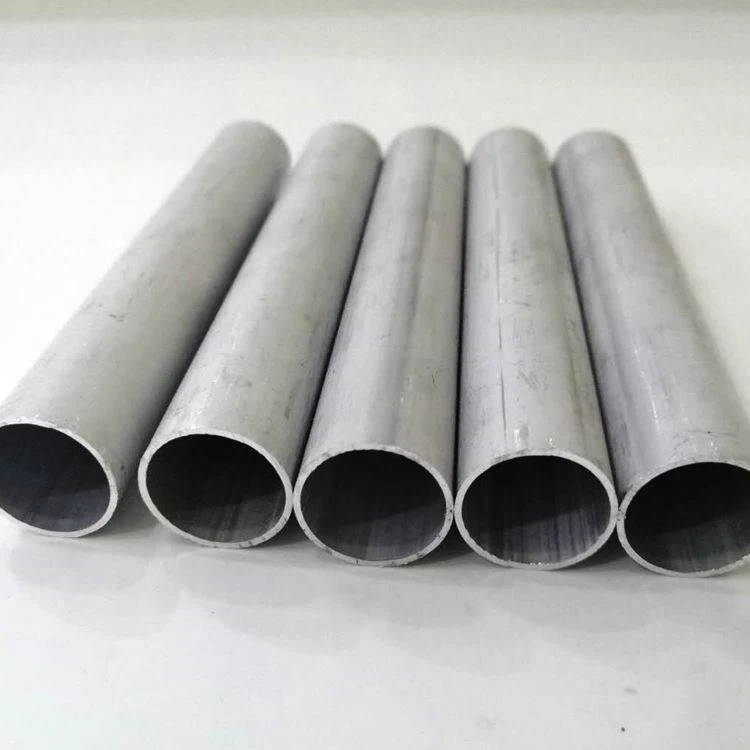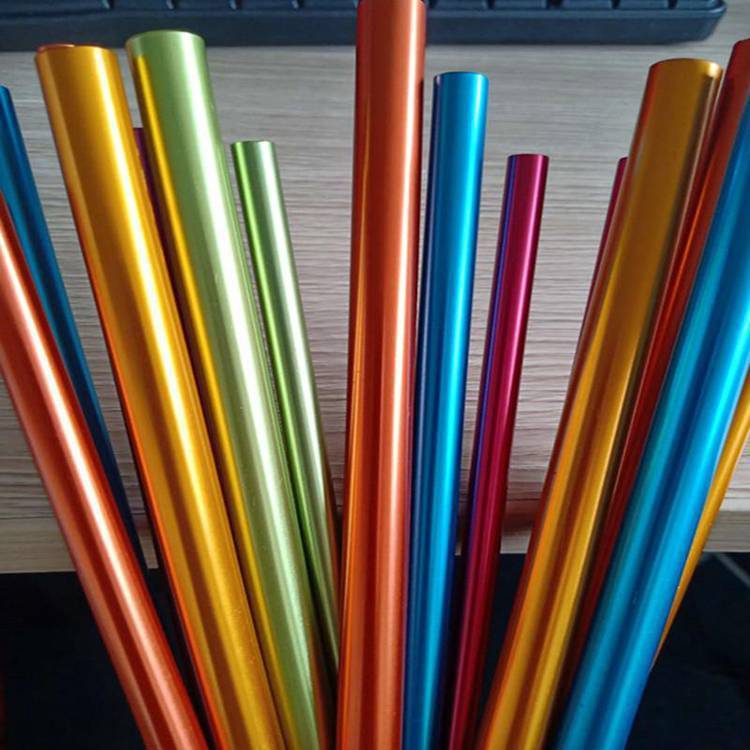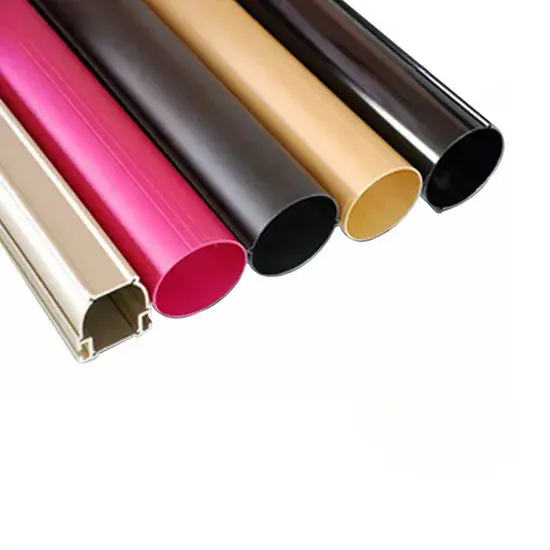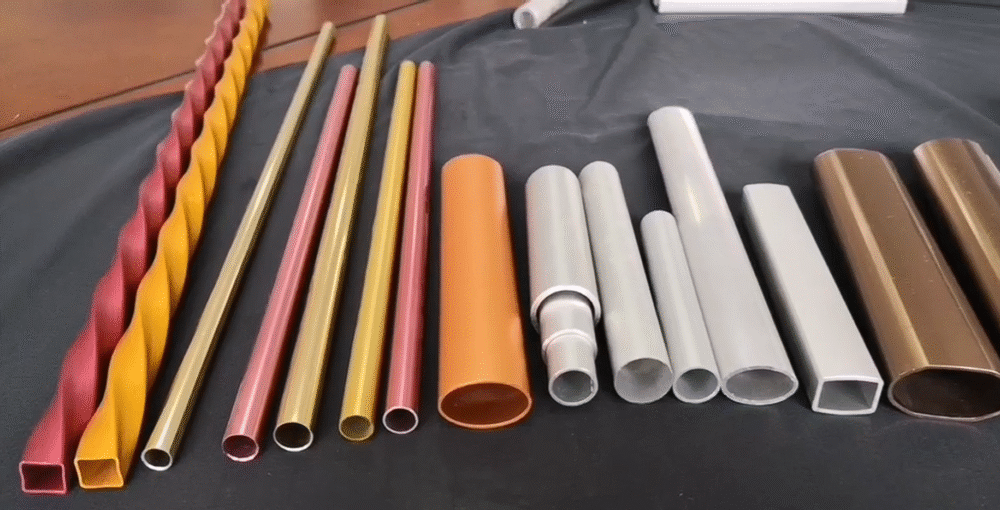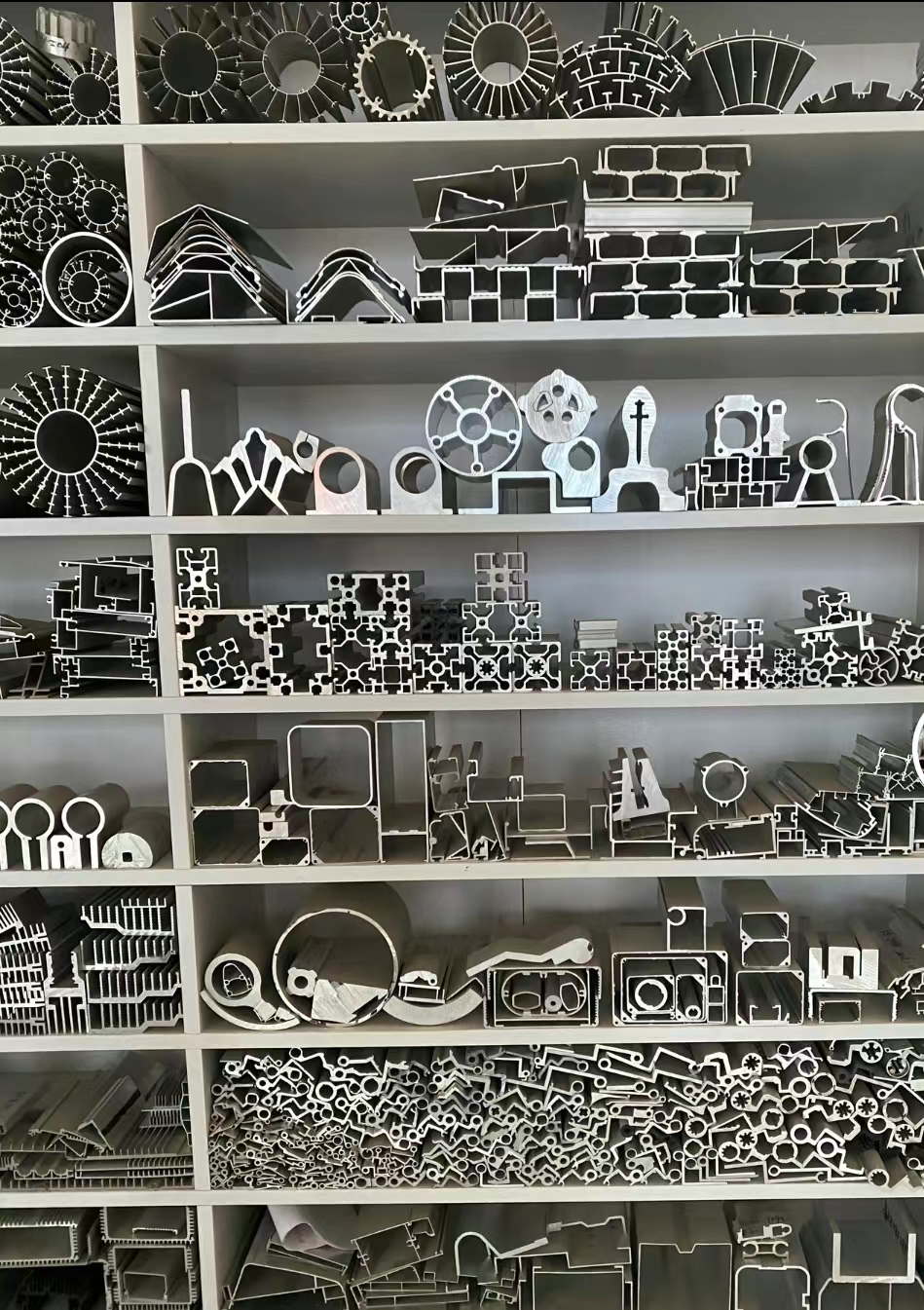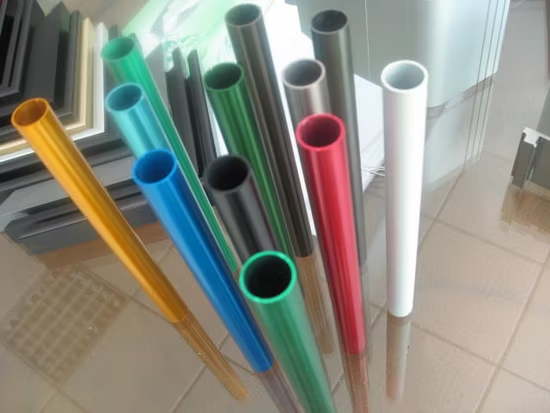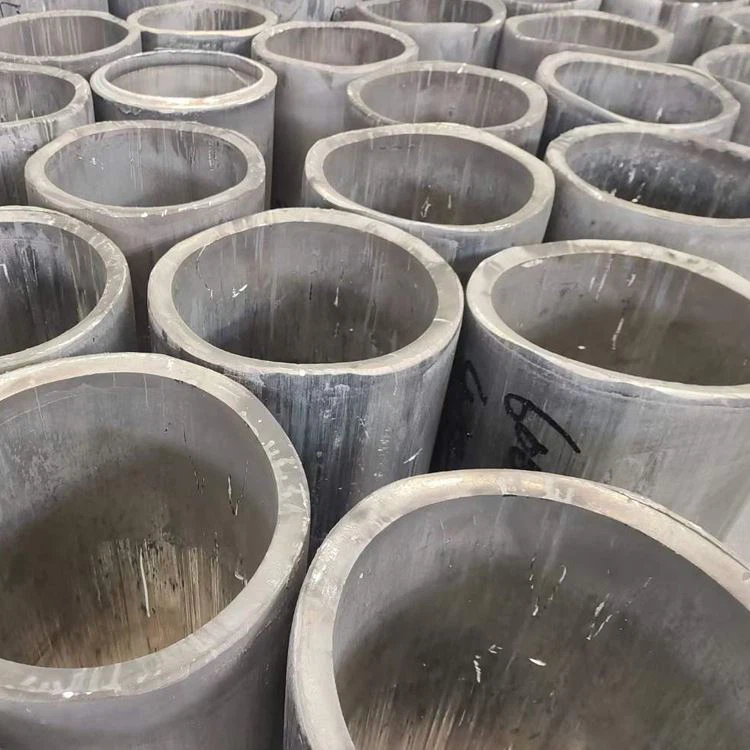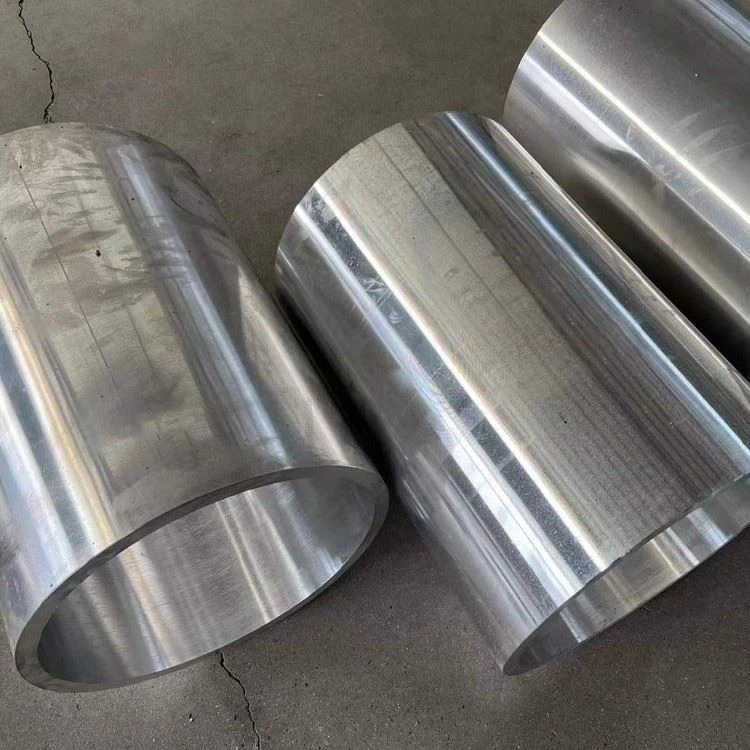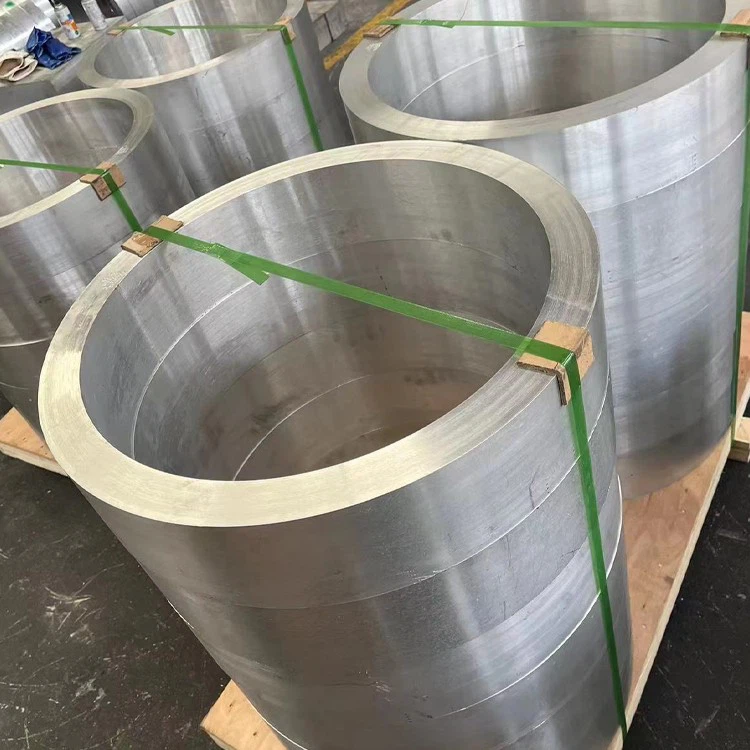1. Material Composition & Standards
Conforming to ASTM B210, AMS 4151, and ISO 6361-2 standards, 6061-T6 aluminum tubing features a magnesium-silicon alloy formulation optimized for structural applications:
Primary Elements:
Magnesium (Mg): 0.8-1.2% (forms Mg₂Si precipitates)
Silicon (Si): 0.4-0.8% (enhances strength and fluidity)
Copper (Cu): 0.15-0.40% (improves machinability)
Base Material:
Aluminum (Al): ≥97.0% (balance)
Impurity Limits:
Iron (Fe): ≤0.70%
Chromium (Cr): 0.04-0.35%
Zinc (Zn): ≤0.25%
Manganese (Mn): ≤0.15%
Third-party verification per NADCAP AC7117 ensures chemical consistency with max 5% deviation in key elements. The balanced Mg:Si ratio (1.73:1) enables optimal precipitate formation during T6 heat treatment. Complies with SAE J454, AMS-QQ-A-200/2, and ASTM B241 for pressure applications.
6061-T6 demonstrates superior structural efficiency for load-bearing applications:
| Property |
Value |
Test Standard |
| Tensile Strength (Rm) |
310-330 MPa |
ASTM E8 |
| Yield Strength (Rp0.2) |
275-290 MPa |
ASTM E8 |
| Elongation at Break (%) |
10-15% |
ASTM E8 |
| Shear Strength |
207 MPa |
ASTM B769 |
| Compressive Yield |
285 MPa |
ASTM E9 |
| Fatigue Endurance (10⁷ cycles) |
95-110 MPa |
ISO 1099 |
| Fracture Toughness |
29 MPa√m |
ASTM E399 |
| Hardness (Rockwell B) |
60-65 HRB |
ASTM E18 |
Maintains 85% room temperature strength at 150°C and exhibits excellent impact toughness of 20J at -40°C.
3. Heat Treatment Process
The T6 temper sequence follows precisely controlled parameters:
Solution Treatment:
530°C ±10°C for 60-90 minutes (homogenization)
Atmosphere: Nitrogen-protected furnace (±5°C uniformity)
Rapid Quenching:
Water quenching at >200°C/sec cooling rate
Quench delay: <15 seconds maximum
Artificial Aging:
175°C ±5°C for 8-10 hours
Cooling method: Forced air (≥10°C/min rate)
Microstructural Features:
Grain size: ASTM 5-6 (20-50μm)
Precipitate distribution: β” (Mg₅Si₆) phase dominant
Dislocation density: 10⁸/cm²
Secondary phase particles: <0.5% volume fraction
Reheating above 250°C causes overaging with 15% strength reduction. Stress relief required after severe forming: 345°C for 1 hour + re-aging.
4. Dimensions & Customization
Manufactured to structural engineering tolerances:
| Parameter |
Standard Range |
Precision Tolerance |
Custom Options |
| Outer Diameter |
6-500 mm |
±0.1% OD |
Rectangular profiles |
| Wall Thickness |
0.8-25 mm |
±7% WT |
Variable wall transitions |
| Length |
1-12 m |
+0/-3 mm |
Up to 20m lengths |
| Straightness |
– |
0.5 mm/m max. |
±0.2 mm/m |
| Ovality |
– |
≤0.75% TIR |
≤0.3% TIR |
| Bend Radius (min) |
2.0× OD |
– |
Tight radius: 1.2× OD |
Fabrication Services:
Precision rotary draw bending (max 180°)
CNC end forming for complex joints
Hydroforming for non-circular sections
Notching and coping for truss systems
Anodizing per MIL-A-8625 Type II
5. Corrosion Resistance Properties
Environmental Performance Data
| Environment |
ISO 9223 Rating |
Corrosion Rate (μm/yr) |
Protection Recommendation |
| Rural Atmosphere |
RC2 (Good) |
<3 μm/yr |
Architectural anodizing |
| Coastal Exposure |
RC3 (Fair) |
10-15 μm/yr |
PVDF coating systems |
| Industrial Area |
RC4 (Moderate) |
15-30 μm/yr |
Ceramic-epoxy lining |
| Alclad 6061 |
RC1 (Excellent) |
<1 μm/yr |
10% clad layer |
Protection Methods:
Anodizing:
Sulfuric acid (Type II): 15-25μm thickness
Hard anodizing (Type III): 50-70μm (>60 HRC)
Organic Coatings:
Fluoropolymer coatings: 25-50μm DFT
Polyester powder coating: 60-80μm
Chemical Treatments:
Chromate conversion (MIL-DTL-5541)
Plasma electrolytic oxidation (PEO)
6. Machinability Characteristics
Optimization Parameters
| Operation |
Tool Material |
Speed (m/min) |
Feed (mm/rev) |
Notes |
| Turning |
Carbide K10 |
300-500 |
0.15-0.30 |
7° positive rake |
| Milling |
Carbide K20 |
250-450 |
0.06-0.18 |
Climb milling |
| Drilling |
TiAlN Coated |
60-100 |
0.05-0.12 |
140° point angle |
| Tapping |
HSS-Co8 |
10-15 |
Pitch matched |
70% thread depth |
Machining Performance:
Machinability rating: 80% (baseline: 2011-T3=100%)
Surface finish achievable: Ra 0.4μm
Built-up edge tendency: Low (Grade 2 per ISO 3685)
Chip characteristics: Continuous chips requiring breakers
Coolant requirements: Soluble oil 5-8% concentration
Dimensional stability: <0.02mm thermal expansion at 100°C
7. Weldability & Joining Methods
Gas Tungsten Arc Welding (GTAW) Recommended
Requires strict heat control to preserve properties:
Fusion Welding Parameters
Filler alloys: ER4043 (AlSi5) or ER5356 (AlMg5)
Interpass temperature: <65°C
Preheat: Optional for >6mm thickness
Post-weld aging: 175°C/4hrs to restore properties
Alternative Joining
Friction Stir Welding:
Rotation: 800-1200 RPM
Traverse: 50-200 mm/min
Adhesive Bonding:
Epoxies: FM73 (22-28 MPa shear)
Surface prep: Chromate conversion
Mechanical Fastening:
Blind rivets: Stainless steel mandrel
Flow drill screws: Up to 800N axial load
Joining sleeves: 150% tube strength retention
| Property |
Value |
Test Standard |
| Density |
2.70 g/cm³ |
ASTM B311 |
| Thermal Conductivity (25°C) |
167 W/m·K |
ASTM E1461 |
| CTE (20-100°C) |
23.6 μm/m·°C |
ASTM E228 |
| Electrical Resistivity |
42 nΩ·m |
ASTM B193 |
| Modulus of Elasticity |
68.9 GPa |
ASTM E111 |
| Fatigue Strength Coefficient |
0.56 |
ASTM E739 |
| Specific Heat (100°C) |
960 J/kg·K |
ASTM E1269 |
| Recrystallization Temp |
290°C |
ASTM E112 |
9. Surface Quality Standards
Surface finishes:
As-drawn: Ra 0.8-1.6μm
Cold-finished: Ra 0.4-0.8μm
Mirror polish: Ra <0.1μm achievable
Inspection criteria (ASTM B241):
Scratch depth: <0.5% WT
Surface inclusions: <0.25mm
Discoloration: None
Die lines: <0.1mm height
Cleaning protocols:
Alkaline degreasing to AMS 2646
Acid etching for adhesives
Electropolishing for sanitary applications
10. Certifications & Testing
Quality Assurance Protocols
Chemical Analysis:
Spectrometry per ASTM E1251
ICP verification for trace elements
Mechanical Testing:
Transverse tensile testing (ASTM E8)
Flattening test to 75% OD reduction
NDT Methods:
Ultrasonic testing: 5-10MHz probes
Hydrostatic testing: 2× working pressure
Eddy current per ASTM E309
Industry Certifications
AS9100 Aerospace Quality
ISO 9001:2015 Quality Management
PED 2014/68/EU Annex I Category II
TÜV SÜD Pressure Vessel Certification
Lloyds Register Type Approval
FDA CFR 21.177.1500 (Food contact compliant)
Structural Applications: Roll cages, space frames, hydraulic cylinders, robotic arms, structural trusses, and architectural elements where strength/weldability balance is critical.
Packaging: VCI paper interleaving + shrink-wrap bundles, wooden crates with desiccant. Standard lead time: 6 weeks.

